When people start a steroid cycle, the first changes they notice are size, strength, and often, unwanted water retention. In comparison, some degree of intracellular hydration helps muscles look fuller and stronger, too much leads to puffiness, joint discomfort, and even elevated blood pressure.
At Bio Genetics USA, we help athletes strike the perfect balance between power and aesthetics. Understanding how to control water retention can make the difference between looking “bulky” and looking defined.
Understanding Water Retention During Steroid Use
Water retention, medically known as edema, occurs when excess fluid accumulates within body tissues. While a small amount of fluid retention can make muscles appear fuller and enhance pump, excessive retention often leads to puffiness, bloating, and a loss of muscular definition. During a steroid cycle, this process is largely hormonal, influenced by how anabolic compounds interact with key regulators like estrogen, aldosterone, and cortisol.
The Hormonal Mechanisms Behind Water Retention
Certain anabolic steroids stimulate enzymes that convert testosterone into estrogen — a process known as aromatization. Elevated estrogen levels cause the body to retain sodium and water in the subcutaneous layer, which softens muscle appearance. Simultaneously, some compounds increase the release of aldosterone, a hormone produced by the adrenal glands that controls fluid balance.
When aldosterone levels rise, your kidneys conserve sodium and excrete less water, leading to a buildup of extracellular fluid. This is why compounds like testosterone enanthate, Dianabol, and Deca-Durabolin are commonly linked to visible water retention during bulking cycles.
Key Causes of Water Retention on Steroid Cycles
- Aldosterone Increase
Steroids can elevate aldosterone secretion, which directly triggers sodium retention. As sodium levels climb, water follows — causing swelling in the face, ankles, and hands. - Estrogen Conversion
Aromatizing steroids raise estrogen, promoting water buildup and even mild fat storage around the abdomen. Without estrogen control through proper aromatase inhibitors or nutritional support, bloating becomes unavoidable. - Dietary Imbalance
A diet high in sodium but low in potassium and magnesium intensifies bloating. Sodium and potassium work in opposition — one retains water, the other releases it. If the balance tilts toward sodium dominance, excess extracellular fluid builds up rapidly. - Overtraining and Inflammation
Intense or prolonged workouts cause microtears in muscle tissue. The body sends extra fluid to these areas to assist in healing — a process known as inflammatory edema. While temporary, this can worsen visible puffiness during high-volume training phases. - Cortisol Fluctuations
Some users overlook the stress hormone cortisol, which also affects fluid retention. Elevated cortisol levels from poor sleep or overtraining can enhance sodium retention and impair kidney filtration efficiency.
Why Managing Water Retention Is Crucial
Uncontrolled water retention isn’t just a cosmetic issue — it can also affect cardiovascular health and electrolyte balance. Excess sodium and water strain the heart, raise blood pressure, and increase the risk of muscle cramps. For competitive athletes, it can also distort physique conditioning and obscure muscular definition during cutting phases.
A controlled approach — adjusting diet, supplement support, hydration, and compound selection — can dramatically reduce unwanted water retention while preserving the benefits of a steroid cycle. When properly managed, your muscles stay hydrated, full, and defined, without the “puffy” side effects commonly associated with bulking compounds.
The Science: Why Steroids Affect Water Balance
Steroids amplify protein synthesis and glycogen storage, both of which naturally require more intracellular water. But this cellular hydration can easily spill over into extracellular retention if your electrolyte ratios are off.
Here’s what’s happening at the biochemical level:
- Aldosterone Regulation:
Certain steroids stimulate aldosterone secretion from the adrenal glands, causing the kidneys to retain sodium and water. - Estrogen Conversion:
Aromatizable compounds like testosterone or Dianabol convert to estrogen, which promotes fat and water retention under the skin. - Glycogen Saturation:
Every gram of glycogen stored in muscle binds roughly 3 grams of water. Without potassium balance and hydration control, this “pump” effect can lead to swelling. - Electrolyte Disruption:
Low magnesium or potassium intake makes sodium harder to regulate, worsening bloat and muscle cramps.
Maintaining proper balance prevents these physiological shifts from diminishing your hard-earned definition.
(For more on balancing nutrients during cycles, check our related article: Cycle Length Tips).
Smart Strategies to Control Water Retention
1. Optimize Sodium and Potassium Balance
- Keep sodium intake between 1,800 – 2,300 mg/day, adjusted to your sweat rate.
- Increase potassium through foods like bananas, spinach, or avocados.
- Avoid extreme sodium restriction—it can backfire by increasing aldosterone.
2. Manage Estrogen Levels
- Use aromatase inhibitors (AIs) responsibly when running aromatizing compounds.
- Focus on natural estrogen support—cruciferous vegetables (broccoli, kale) aid estrogen metabolism.
- Always confirm estrogen control through periodic bloodwork.
3. Support Liver and Kidney Function
- Add milk thistle (silymarin) or N-acetyl cysteine to support detoxification.
- Maintain hydration at 35 ml per kg of body weight daily.
- Limit alcohol and processed foods that burden the filtration organs.
4. Incorporate Natural Diuretics
- Green tea, dandelion root, and magnesium help flush excess water without depleting electrolytes.
- Avoid over-the-counter diuretics unless supervised—these can disrupt electrolyte balance severely.
5. Track Your Body’s Response
Keep a log of your morning body weight, waist circumference, and water intake. A sudden 3–5 lb increase within 48 hours often signals excessive fluid retention.
Choosing Compounds Wisely
Some steroids inherently cause more water retention than others. Below is a quick reference:
| Compound | Water Retention Level | Best Used For |
| Testosterone Enanthate / Dianabol | High | Bulking cycles |
| Nandrolone Decanoate (Deca) | Moderate | Strength and joint relief |
| Trenbolone / Winstrol / Anavar | Low | Cutting and definition |
| Equipoise | Mild | Balanced performance |
Pro Tip: Pairing lower-estrogenic compounds with proper cycle support supplements can help maintain lean gains with fewer bloating issues.
The Role of Nutrition in Water Control
When it comes to managing water retention during steroid cycles, your nutrition plays as big a role as your training or supplementation. The foods and fluids you consume directly influence how much water your body holds under the skin versus within the muscle cells. Proper nutrition helps maintain intramuscular hydration—the kind that fuels performance and gives muscles their dense, full look—while preventing subcutaneous water storage that blurs definition.
1. Stay Hydrated—More Water Means Less Retention
It might sound counterintuitive, but drinking more water actually helps reduce bloating. When you don’t drink enough, your body holds onto fluid defensively, thinking it’s dehydrated.
Consistent hydration supports:
- Kidney function: Proper water intake flushes excess sodium and toxins from the body.
- Hormonal regulation: Balanced hydration helps control aldosterone and cortisol—two hormones that affect fluid balance.
- Muscle fullness: Muscles are 70–75% water, and dehydration directly impacts strength, pumps, and recovery.
💡 Tip: Aim for 35–40 ml of water per kilogram of body weight daily, and adjust based on sweat rate or cycle intensity. Adding electrolytes (like magnesium or potassium) further enhances hydration efficiency.
2. Eat Whole Foods and Watch Sodium Intake
Processed foods—such as deli meats, canned soups, sauces, and fast food—are loaded with hidden sodium. Excessive sodium intake increases water retention by disrupting the balance between sodium and potassium. This can make your muscles appear “puffy” rather than sculpted.
Focus on whole, unprocessed foods:
- Fresh meats and fish (instead of cured or seasoned variants)
- Brown rice, oats, and sweet potatoes for clean carbohydrate sources
- Leafy greens and fruits for natural potassium and magnesium
A moderate sodium intake (1,800–2,300 mg/day) ensures electrolyte stability without bloating.
3. Include Healthy Fats for Hormonal and Kidney Support
Healthy fats—especially Omega-3 fatty acids—play an underestimated role in water balance. They enhance kidney filtration, reduce systemic inflammation, and improve vascular health, allowing the body to eliminate excess fluids more efficiently.
Incorporate these fat sources daily:
- Fish oils (salmon, sardines, or quality supplements)
- Avocados and olive oil for monounsaturated fats
- Chia and flax seeds for plant-based Omega-3s
These fats also support testosterone production and joint lubrication, helping balance the hormonal stress caused by steroid use.
4. Limit Simple Carbohydrates and Manage Glycogen Spikes
Carbohydrates play a dual role—they’re essential for energy and muscle growth, but excessive simple carbs (like sugar, white rice, or pastries) can lead to glycogen-induced water retention.
Each gram of glycogen stored in muscle binds roughly 3 grams of water, which can quickly make you appear bloated when carb intake is uncontrolled. Instead:
- Focus on complex carbs (quinoa, oats, brown rice) to maintain steady energy.
- Time your carb intake around workouts when insulin sensitivity is highest.
- Combine carbs with lean proteins to improve nutrient uptake and muscle recovery.
This approach keeps glycogen storage within muscle cells where it belongs—maximizing performance without subcutaneous swelling.
5. Support Electrolyte Balance Through Micronutrients
Micronutrients like magnesium, potassium, and calcium are critical in regulating sodium and fluid retention. Deficiencies in these minerals can lead to cramping, fatigue, or bloating.
Focus on nutrient-dense foods such as:
- Spinach, kale, and bananas (for potassium)
- Almonds and pumpkin seeds (for magnesium)
- Greek yogurt or sardines (for calcium)
These minerals maintain proper water movement between cells and optimize muscle performance during steroid cycles.
The Takeaway
The ultimate goal of your diet during a steroid cycle isn’t just to look bigger—it’s to look lean, defined, and functional. A carefully balanced diet keeps your body hydrated where it matters most: inside your muscle cells, not under your skin.
By following these nutrition principles, you’ll minimize unwanted water retention, maintain a sharper physique, and sustain the clean, hard look that every athlete strives for.
Recovery and Post-Cycle Water Balance
After cycle completion, hormonal fluctuations can trigger temporary water rebound. To manage it:
- Maintain consistent hydration levels.
- Keep sodium and potassium balanced.
- Continue antioxidant support—Vitamin C and CoQ10 aid kidney recovery.
- Don’t panic about mild early post-cycle puffiness—it normalizes as hormones stabilize.
Bio Genetics USA: Building a Leaner, Stronger You
At Bio Genetics USA, we help athletes understand not just how to grow, but how to grow smart. Our research-backed guidance and premium supplements support your body’s natural balance through every stage of your cycle—from hydration management to full recovery.
For optimal results, explore our advanced health-support formulas designed to preserve lean mass, protect organs, and improve performance safely.
👉 Visit our online store: https://biogeneticsusa.com/shop/ and take control of your transformation with precision, safety, and science.






